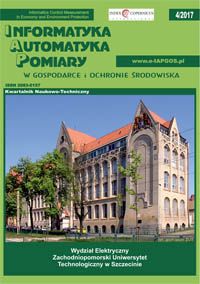Ameyaw E.E., Chan A.PC: Evaluation and ranking of risk factors in public–private partnership water supply projects in developing countries using fuzzy synthetic evaluation approach. Expert Systems with Applications 42(12), 2015, 5102–5116 [doi: 10.1016/j.eswa.2015.02.041].
Elfaki A., Alatawi O., Abushandi E.: Using intelligent techniques in construction project cost estimation: 10-Year Survey. Advances in Civil Engineering 2014, Article ID 107926 [doi: 10.1155/2014/107926].
Fragiadakis N.G., Tsoukalas V.D., Papazoglou V.J.: An adaptive neuro-fuzzy inference system (ANFIS) model for assessing occupational risk in the shipbuilding industry. Safety Science 63/2014, 226–235.
Hu J., Shen E., Gu Y.: Evaluation of Lighting Performance Risk Using Surrogate Model and EnergyPlus. Procedia Engineering 2015, 522–529.
Idrus A., Nuruddin M.F., Rohman M.A.: Development of project cost contingency estimation model using risk analysis and fuzzy expert system. Expert Systems with Applications 2011, 1501–1508.
Kłosowski G., Gola, A.: Risk-based estimation of manufacturing order costs with artificial intelligence. Computer Science and Information Systems (FedCSIS), Federated Conference on. IEEE, 2016, 729–732.
Paul S.K., Sarker R., Essam D.: Managing risk and disruption in production-inventory and supply chain systems: A review. Journal of Industrial and Management Optimization 12.3/2016, 1009–1029.
Radke A.M., et al.: A risk management-based evaluation of inventory allocations for make-to-order production. CIRP Annals-Manufacturing Technology 2013, 459–462.
Rudnik K., Deptuła A.M.: System with probabilistic fuzzy knowledge base and parametric inference operators in risk assessment of innovative projects. Expert Systems with Applications 2015, 6365–6379.
Rush C., Roy R.: Analysis of cost estimating processes used within a concurrent engineering environment throughout a product life cycle. 7th ISPE International Conference on Concurrent Engineering, Lyon, France, July 17th-20th, Technomic Inc., Pennsylvania USA, 2000 58–67.
Schwarz I.J., Sandoval-Wong J.A., Sánchez P.M.: Implementation of artificial intelligence into risk management decision-making processes in construction projects, 2015, 361–362.
Sentia P. D., Mukhtar M., Shukor S. A.: Supply chain information risk management model in Make-to-Order (MTO). Procedia Technology 2013, 403–410.
Taroun A., Yang J. B., Lowe D.: Construction risk modelling and assessment: Insights from a literature review. The Built and Human Environment Review 2011, 93.
Taylan O. et al.: Construction projects selection and risk assessment by fuzzy AHP and fuzzy TOPSIS methodologies. Applied Soft Computing 2014, 105–116.







